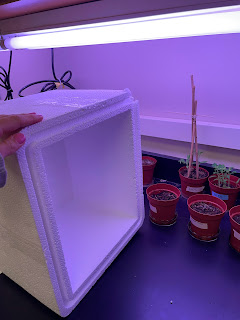Week 3 - Bioacoustics
Howdy everyone!
I am still awaiting my Nicotiana sanderea's germination. In the meantime I have begun to set up the sound proof box I will need for listening to the plants emissions. I will be using either styrofoam or a glass box. I am still deciding which will eliminate the most background noise. I also began running tests with the microphone, so that when listening time comes, I will have had prior understanding on how to do so.
To continue with the theme of sound, I began researching the physical definition for a sound wave. I have mainly had experience with EMR waves. Sound waves or pressure waves are unique in that they are transported particle to particle. This means that sound waves cannot travel though vacuums like EMRs can. They need a medium like air or water for example. The compression is when the wave is most compact, and the opposite is true of a rarefaction. So instead of crests and throughs, the wavelength is a quantification of the compression to compression or rarefaction to rarefaction. Sound waves are ultimately measures of pressure. Sounds waves are classified as longitudinal waves because the wave travels in the same direction as the particles in the medium.
Here is a video of sound waves and a picture of the sound proofing.
Resources
Henderson, T. (2021). Physics tutorial: Sound as a mechanical wave. The Physics Classroom. Retrieved February 8, 2022, from https://www.physicsclassroom.com/class/sound/Lesson-1/Sound-is-a-Mechanical-Wave
NASA, N. A. S. A. (2021). The Science of Sound. NASA. Retrieved February 8, 2022, from https://www.nasa.gov/specials/X59/science-of-sound.html



Comments
Post a Comment